ANDALUCIA – When most tourists have left Andalucia in the wake of the heat, the best season to visit this southern Spanish region starts. Wooded nature reserves don their dramatic autumn outfit and yield fruits that villagers celebrate the harvest extensively.
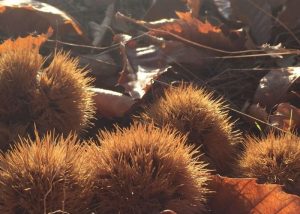 To enjoy the splendour of colours, you have to know where to find them. A large part of Andalucia remains eternally green thanks to many types of coniferous and evergreen trees. That’s why InSpain.news lists the four most beautiful areas to enjoy autumn colours.
To enjoy the splendour of colours, you have to know where to find them. A large part of Andalucia remains eternally green thanks to many types of coniferous and evergreen trees. That’s why InSpain.news lists the four most beautiful areas to enjoy autumn colours.
Sierra de Cazorla, Segura y las Villas
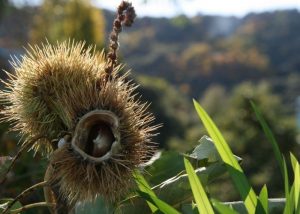 If you drive from Jaén in the direction of Cazorla, the monotonous landscape with tens of millions of olive trees in neat rows is suddenly interrupted by a mountain range rising from this mar de olivos. On its flanks lies the village of Cazorla, from which Spain’s largest protected natural area owes its name. In the Sierras de Cazorla, Segura y las Villas you will find rugged mountains, reflecting lakes, and vast forests. You will see different types of oaks, maples and chestnuts, and wooden log cabins. In villages, there is the intoxicating smell of wood stoves and here and there you will bump into groups of jabalís (wild boars) rooting in the ground.
If you drive from Jaén in the direction of Cazorla, the monotonous landscape with tens of millions of olive trees in neat rows is suddenly interrupted by a mountain range rising from this mar de olivos. On its flanks lies the village of Cazorla, from which Spain’s largest protected natural area owes its name. In the Sierras de Cazorla, Segura y las Villas you will find rugged mountains, reflecting lakes, and vast forests. You will see different types of oaks, maples and chestnuts, and wooden log cabins. In villages, there is the intoxicating smell of wood stoves and here and there you will bump into groups of jabalís (wild boars) rooting in the ground.
The area with waterfalls, reservoirs, rugged rocks, and deep gorges is a mecca for outdoor sports enthusiasts. The highest peak of the park is Cerro Empanadas which reaches up to 2,200 metres. The most beautiful walking and cycling routes are everywhere, although the park is also large enough to explore by car. The beating heart of the park is the town of Arroyo Frío. In Segura de la Sierra are Arab baths and a castle from the thirteenth century.
More information: Turismoencazorla.com, Sierrasdecazorlaseguraylasvillas.es
La Alpujarra
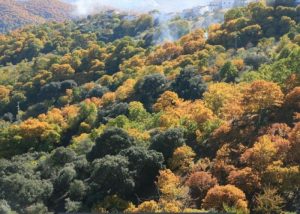 On the southern flanks of the Sierra Nevada, Spain’s mountain range with the highest peaks on the mainland lies the area referred to as La Alpujarra. Due to its isolated location, the area was the last refuge of the Moors before they were expelled from Spain. The architecture in the villages is still mainly Berber and small whitewashed houses built together have flat slate roofs with quirky chimneys pointing into the sky. The bright red of the peppers that hang to dry adorn the white facades. And poplars that change colour in the autumn to ochre yellow rise gently between the impressive mountain ridges.
On the southern flanks of the Sierra Nevada, Spain’s mountain range with the highest peaks on the mainland lies the area referred to as La Alpujarra. Due to its isolated location, the area was the last refuge of the Moors before they were expelled from Spain. The architecture in the villages is still mainly Berber and small whitewashed houses built together have flat slate roofs with quirky chimneys pointing into the sky. The bright red of the peppers that hang to dry adorn the white facades. And poplars that change colour in the autumn to ochre yellow rise gently between the impressive mountain ridges.
The first village you pass is Lanjarón, known for its hot springs and associated spa. This is followed by hippie mecca Órgiva, which is the buzzing centre of the region. And also the most touristic villages are Pampaneira, Bubión, and Capileira. Capileira is the gateway to the highest peaks of the Sierra Nevada, the Mulhacén (3,478m) and the Veleta (3,396m). Numerous walks start from here and also an old road that is very popular with cyclists to the peaks. In Trevélez, the highest village in Spain at 1,476 metres, delicious jamón serrano is dried in the cool and healthy mountain air.
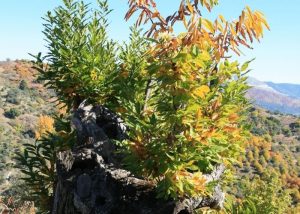 You can walk from village to village in the Alpujarras without ever entering asphalt, the European hiking route GR7 runs through it, and above the villages is the Sulayr route at an altitude of two thousand metres on average. This circular route leads around the national park in 19 stages and is accessible from every village in the Alpujarra.
You can walk from village to village in the Alpujarras without ever entering asphalt, the European hiking route GR7 runs through it, and above the villages is the Sulayr route at an altitude of two thousand metres on average. This circular route leads around the national park in 19 stages and is accessible from every village in the Alpujarra.
More information: Laalpujarra, La-alpujarra.org, Turismoalpujarra.com, Andalucia.org, Juntadeandalucia
Sierra de Aracena
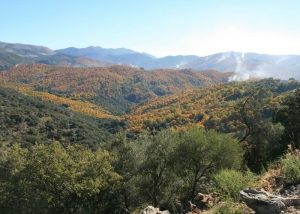 The birthplace of the Iberian pig, where the world-famous ham pata negra comes from, consists of a picturesque and wooded landscape that is gently draped over rolling green hills. Here you will find unadorned pueblos blancos. Small houses are situated around medieval churches and often unpaved roads. The only noise comes from the village bar, where you can eat delicious food for little money.
The birthplace of the Iberian pig, where the world-famous ham pata negra comes from, consists of a picturesque and wooded landscape that is gently draped over rolling green hills. Here you will find unadorned pueblos blancos. Small houses are situated around medieval churches and often unpaved roads. The only noise comes from the village bar, where you can eat delicious food for little money.
While you walk here on ancient paths through beautifully coloured oak and chestnut forests you will encounter many black pigs. In the dehesas (meadows with cork and holm oaks), these Iberian pigs feed on herbs, shrubs, and acorns, giving their ham a delicious, typical taste. You pass castles, churches, and monasteries, and everywhere you literally and figuratively taste rural life and the products that are produced with it. Ham factories, chestnut cultivation, and mushrooms together with cork production are the main source of income in this area.
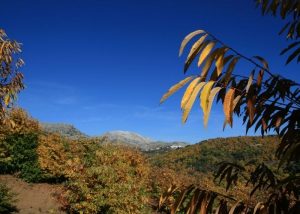 Aracena is the busiest place in the area. You will find the famous caves Gruta de las Maravillas here. Dozens of walking and cycling routes depart from the village of Castaño del Robledo. Another extremely picturesque village is Linares de la Sierra. This was once the largest place in the area until the English came to exploit the mines in nearby Riotinto. The surreal landscape around these mines consists of beautiful autumn colours even without trees and is very special to visit. In the villages of Jabugo and El Repilado you will find just about all the ham factories in the area.
Aracena is the busiest place in the area. You will find the famous caves Gruta de las Maravillas here. Dozens of walking and cycling routes depart from the village of Castaño del Robledo. Another extremely picturesque village is Linares de la Sierra. This was once the largest place in the area until the English came to exploit the mines in nearby Riotinto. The surreal landscape around these mines consists of beautiful autumn colours even without trees and is very special to visit. In the villages of Jabugo and El Repilado you will find just about all the ham factories in the area.
More information: Sierradearacena.com, Turismosierradearacena.com, Jabugo.es
Valle Genal in the Serrania de Ronda
This lovely valley with tiny white villages and mainly overgrown with chestnuts and other deciduous trees are located in the Serranía de Ronda. Unfortunately, some of the vegetated hills south and partly northeast of Jubrique and Genalguacil in the Sierra Bermeja have been blackened by the recent forest fire. Still, many trees in the other parts of the area have been saved and will still form the ochre forest in autumn.
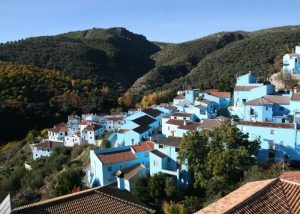 Besides that, the more northerly villages will now be extra happy with every visitor. The valley in which they are located turns a beautiful orange in the autumn thanks to the many chestnut trees that are there. For example, visit the completely blue painted village of Júzcar. In 2011, film producer Sony chose this village to promote the movie Smurfs 3D. When the 250 villagers realised that the blue colour attracted a lot of extra visitors, they decided to keep the ‘smurf village’ blue. It is now a popular destination for families with children.
Besides that, the more northerly villages will now be extra happy with every visitor. The valley in which they are located turns a beautiful orange in the autumn thanks to the many chestnut trees that are there. For example, visit the completely blue painted village of Júzcar. In 2011, film producer Sony chose this village to promote the movie Smurfs 3D. When the 250 villagers realised that the blue colour attracted a lot of extra visitors, they decided to keep the ‘smurf village’ blue. It is now a popular destination for families with children.
Not only around Júzcar, but around all the villages with striking names such as Parauta, Fajarán, and Igualeja you can enjoy wonderful walks along mainly chestnut trees. Every year, 4 million kilos of chestnuts are harvested in this area on 3,500 hectares. Pujerra is the chestnut capital of the area. Restaurant Casa Benito serves various dishes with chestnuts, from main meals, soups to desserts.
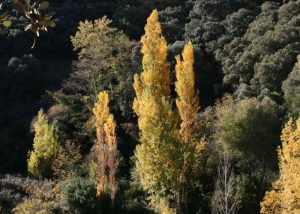
Another charming village to visit is Igualeja with barely 800 inhabitants. Here you can enjoy dishes with chestnuts in the restaurants El Perol and El Nacimiento. A walking route starts from Calle La Tetona through a beautiful chestnut forest and with magnificent views over the surrounding hills. With its numerous caves and gorges, Parauto is a mecca for speleologists.
More information: Serraniaronda.org, Turismoderonda.es, Juzcar.es


